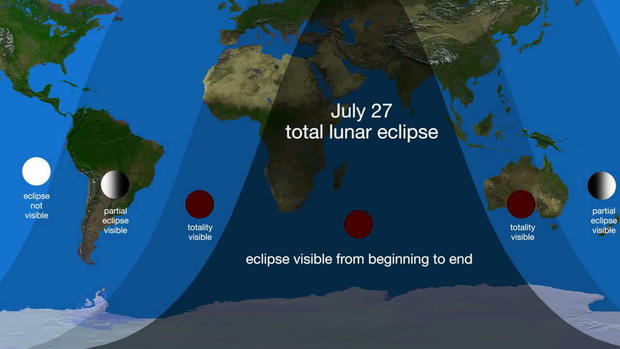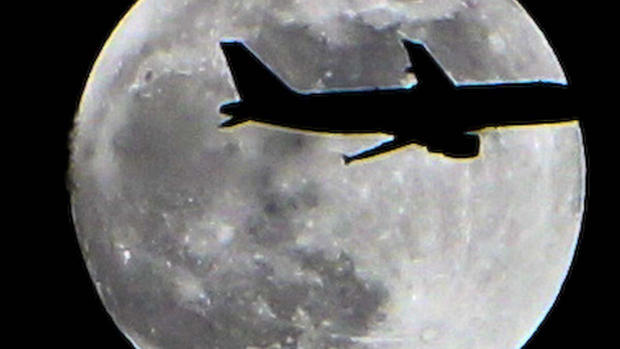How to watch the longest lunar eclipse of the century
The longest lunar eclipse is happening soon. The eclipse will coincide with Mars' closest approach to Earth in 15 years today. The blood moon eclipse will be the longest this century.
What time does the lunar eclipse start?
For about half the world, the "blood moon" will be partly or fully in Earth's shadow from 1:14 p.m. to 7:28 p.m. ET. A period of complete eclipse, known as "totality," will last from 3:30 p.m. to 5:13 p.m. ET, with full totality scheduled for 4:21 p.m. ET.
At the same time, Mars will hover near the moon in the night sky, easily visible with the naked eye. It will appear unusually large and bright, a mere 35.9 million miles from Earth on its elliptical orbit around the sun.
How to watch the eclipse
The best areas to see the eclipse include South America, Africa, the Middle East and Central Asia. But if you can't be there in person, CBSN, CBS News' 24-hour online streaming platform, will stream coverage featuring reports from CBS News foreign correspondent Debora Patta from Johannesburg, South Africa, and analysis from scientists and experts starting at 1:00 p.m. ET.
- What: Total lunar eclipse and "blood moon"
- Where: Africa, the Middle East and Central Asia (totality)
- Online stream: Follow multiple eclipse live video streams on CBSN
- Date: Friday, July 27, 2018
- Start time: 1:14 p.m. ET
- Totality time: 4:21 p.m. ET
- End time: 5:13 p.m. ET
Lunar eclipse from start to end
What is a lunar eclipse?
A total lunar eclipse happens when Earth takes position in a straight line between the moon and sun. Earlier this year, the world got a glimpse of a total lunar eclipse on January 31. It also became a "Super Blue Blood Moon" because it synced up with a supermoon, which is a moon that appears extra big and bright, and a blue moon, which is the second full moon during a calendar month.
According to NASA, the U.S. will have to wait until July 2020 to witness its next lunar eclipse. It's unclear which areas will be able to see it and for how long it will be visible.
Millions of Americans watched the first solar eclipse visible from the U.S. since 1979 last August. The moon passed in front of the sun, casting a 70-mile-wide shadow. It was also the first to cross the entire continent in 99 years.





